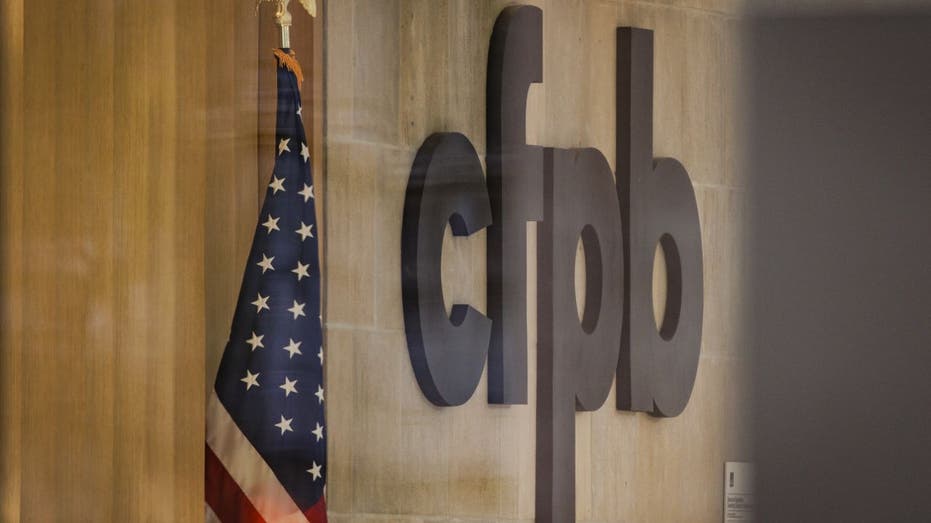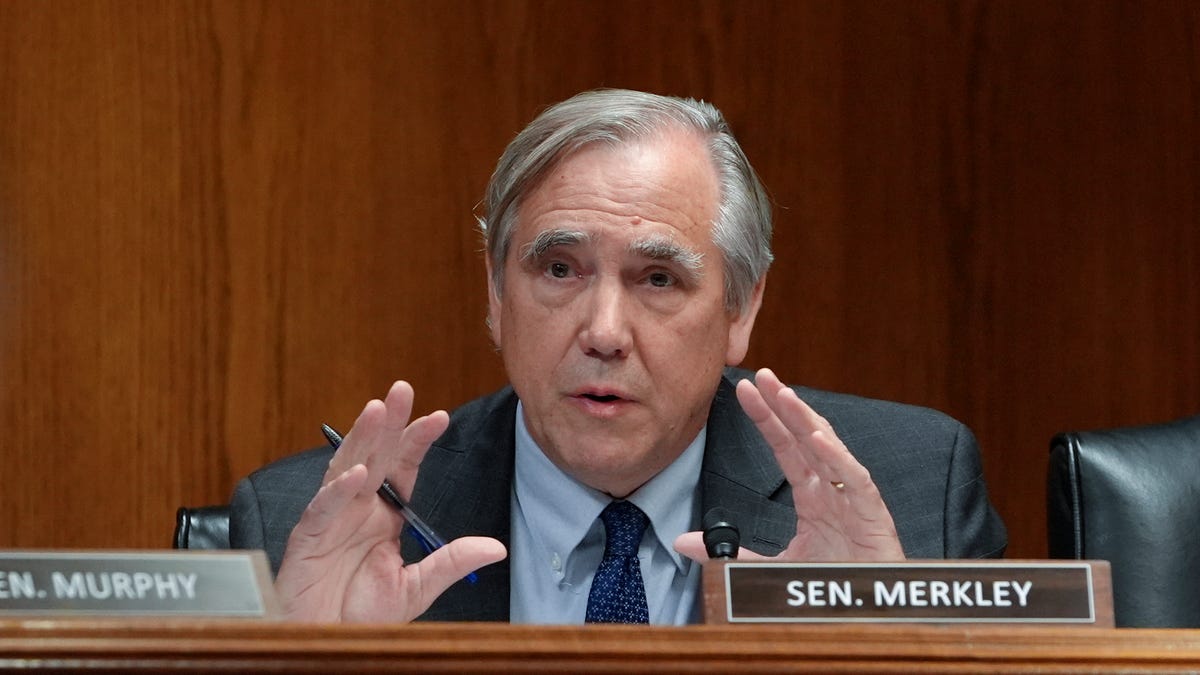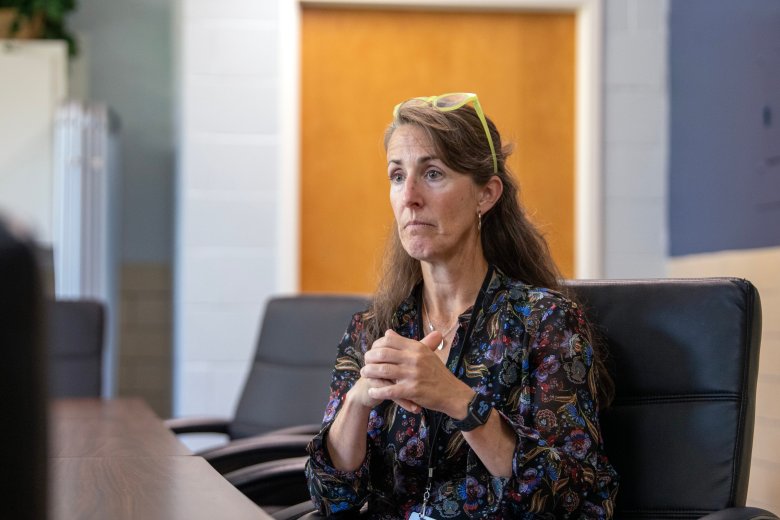Finance
Stock tips from TikTok? The platform brims with financial advice, good and bad

GOP debate: TikTok ban prompts tense interaction
Republican presidential candidates criticize the use of the popular social media app TikTok, both by Americans and each other.
One TikTok influencer adopted the guise of a 7-year-old in pigtails to demystify investment advice. Another appraised the field of S&P 500 investment funds in 56 seconds. A third presented the ultimate Chipotle hack: A sort of reverse-engineered burrito that costs four dollars.
TikTok has emerged as an unlikely mecca for personal finance advice, under the hashtag FinTok. Content creators with such handles as @YourRichBFF and @JohneFinance have collected millions of followers and tens of millions of views with quick, breathless videos that offer tips on everything from credit card rewards to haircut costs to cryptocurrency, often in less than a minute.
As with TikTok generally, FinTok trends young. Many content creators are in their 20s or early 30s. They market themselves not so much on academic credentials or professional training as on lived experience and relatability: A self-made millionaire at 30. A six-figure saver at 25.
In a September survey by WallStreetZen, three-quarters of Gen Z respondents said they learned about personal finance from social media, especially TikTok.
FinTok: Financial advice on TikTok ranges from benign to risky
Much FinTok content seems innocuous, even inspirational: Who couldn’t use some help in balancing their budget?
But some videos veer into potentially risky advice about investments, insurance, and taxes, topics that might better be left to the pros.
“It’s scary, because it’s so unregulated,” said Catherine Valega, a certified financial planner in Boston, Massachusetts. “And the people who post, you click through, and maybe they’ve paid off a student loan, but they have no credentials, in most cases.”
Where, then, to draw the line between good FinTok and bad?
Thousands of TikTok videos offer affirming, uplifting advice for young spenders and savers: How to write a monthly budget. How to start an emergency fund. Where to find high-yield savings. The fundaments of investing.
Checkbook math, as the subject was once known, eludes many young Americans. In a 2022 survey by the National Endowment for Financial Education, only 14% of adults said they had access to financial education in high school, and 15% in college. Most of us seem to pick it up at work, from a mentor, or on our own.
“I didn’t know what to do with my salary.”
Michela Allocca, 28, entered the workforce with a finance degree but no real sense of personal finance.
“I didn’t know what to do with my salary. I didn’t know I should be investing, beyond my 401(k) match,” she said. “There wasn’t any real, relatable resource for me to go to, so I didn’t know how to navigate all of these things.”
Allocca figured it out. She amassed $100,000 in savings by age 25, on a five-figure salary. Today, she posts on TikTok as @BreakYourBudget, engaging more than 800,000 followers with short videos about polishing a resume, handling workplace emotions, renting vs. buying, and opening a CD (but not the musical kind).
Like many successful FinTok creators, Allocca sells personal-finance templates, dashboards and courses. She has published a book, titled “Own Your Money.” She also earns income from branding deals, making videos that function both as advice and advertising, and that are labeled as such.
Her video on certificates of deposit references Ally Bank, a paid partner. A post on credit card rewards cites Credit Karma.
Allocca said she has learned to walk the line between offering benign financial tips and pedaling investment advice, which she views as the province of trained advisers.
“I generally ebb away from talking too much in-depth about investments,” she said. “I don’t know your life, so for me to say, you should go invest in this or that ETF, I can’t really do that in good conscience.”
FinTok influencers occupy a gray area between tips and advice
Allocca occupies a gray area in the universe of investment advice and financial planning. Certified financial planners have special training, much like accountants and lawyers.
By contrast, “a lot of social media experts have no more training or experience than you might, on a particular topic,” said Christine Kieffer, senior director of investor education at FINRA, the Financial Industry Regulatory Authority.
For many TikTok viewers, formal credentials don’t much matter. Successful influencers seem not to trade on pedigree, even when they have it.
One top host, Vivian Tu, is a University of Chicago graduate, former J.P. Morgan trader and Forbes 30 Under 30 honoree.
On TikTok, though, she is Vivian, Your Rich BFF, “Ex-Wall Streeter Helping YOU get Rich,” smiling in a photo as she fans a wad of cash.
Another FinTok influencer, Parii Bafna, offers only this modest claim: “I’m a real person.”
If young TikTok viewers don’t care about the bona fides of content creators, industry experts say, then they should at least consider the attendant risks in the content itself.
A 50-second video that encourages the viewer to take out a CD or open a high-yield savings account would seem to have little downside. A post that touts individual stocks, on the other hand, could bring either weal or woe.
“There’s this vagueness between financial coaching and financial advice,” said Kevin J. Brady, a certified financial planner in New York City. “Financial coaching, there’s no specific investment advice: Here’s how to budget. Here’s how to get your debt paid down.”
Brady said viewers should beware of a post that offers specific instructions on investments or taxes.
“I’m not saying that TikTok is automatically wrong, but be more cautious. That stuff is where you can really go wrong,” he said.
“Social media is public, but finances are personal.”
Financial planning is a dialogue between planner and client that yields advice tailored to the individual. TikTok, by comparison, is a mostly one-way street.
“Social media is public, but finances are personal,” Kieffer said. “So we really need to be thinking about whether what is right for someone else might be right for our own situation.”
TikTok has one undeniable advantage over the financial planning industry: It offers advice for free.
Yet, TikTok users do have other options.
More: Is your financial advisory company among the best? Help USA TODAY rank the top firms
What exactly does ‘rich’ mean?: Here’s what ‘wealthy’ means in 2023 America, in five numbers
The government offers a host of free resources for financial planning, including tools from the Consumer Financial Protection Bureau and the Financial Literacy and Education Commission.
Public libraries can be a trusted resource on consumer finance. And FINRA has a personal finance page.
“It’s okay for the internet and social media to be one source,” Kieffer said. “It just shouldn’t be your only source.”

Finance
State treasurers push CFPB on third-party financial data access rule

Rep. Byron Donalds, R-Fla., on his bill to eliminate the Consumer Financial Protection Bureau, Elon Musks directive to federal workers over documenting work, Congress budget reconciliation process and his political future.
A dozen state financial officers are writing to the Consumer Financial Protection Bureau (CFPB) to uphold consumers’ right to share financial data with authorized third parties as the agency weighs a rule that could restrict their ability to do so, according to a letter exclusively reviewed by FOX Business.
The CFPB is considering revising a regulation under section 1033 of the Dodd-Frank Act, which would revise the definition of a “representative” who makes a request on behalf of the consumer, as well as how to assess fees to cover costs incurred by a covered person responding to a customer request.
Twelve state financial officers — including nine treasurers, two auditors and one controller — wrote in favor of the rule recognizing consumer-authorized third parties as “representatives” while preserving existing authorization and conduct requirements.
They wrote that Section 1033 gives consumers a right to access their financial information upon request and that the rule includes agents, trustees or representatives acting on their behalf, including those who aren’t fiduciaries, upon the consumer’s authorization, which is the “touchstone” of the process that needs to be preserved.
KEY GOP LAWMAKERS BACK TRUMP’S EXECUTIVE ORDER FOR CRYPTO, OTHER ALTERNATIVE ASSETS IN 401(K) PLANS
A dozen state financial officers are arguing for the CFPB to preserve the ability of consumers to authorize non-fiduciary representatives to access their data. (Anna Moneymaker/Getty Images)
“Preserving this interpretation promotes competition and innovation (including for real-time payments, budgeting tools, alternative credit assessment, AI, and crypto) and it reduces the risks of debanking and market concentration,” the financial officers wrote.
“In contrast, narrowing ‘representative’ would harm consumers by reducing choice and entrenching incumbents — outcomes counter to Section 1033’s competitive purpose,” they explained.
The group of state financial officers wrote that the CFPB should affirm the text of the rule by clarifying that a consumer-authorized third-party qualifies as a representative acting on their behalf.
SEC CHAIR WANTS PRIVATE MARKET INVESTMENTS AVAILABLE FOR AMERICANS’ 401(K) PLANS

The CFPB’s proposed rule is revising regulations under the Dodd-Frank Act. (Samuel Corum/Bloomberg via Getty Images)
They also wrote the definition of “representative” shouldn’t be limited to fiduciary relationships as it’s not required by the text and would “unduly restrict consumer choice.”
“Consumers should be able to exercise their Section 1033 rights directly or through an authorized representative of their choosing. A text-faithful interpretation of ‘representative’ sustains competition and innovation and reduces risks of debanking and market concentration,” the state financial officers explained.
State financial officers who signed onto the letter include Kansas Treasurer Steven Johnson, Kentucky Treasurer Mark Metcalf, Mississippi Treasurer David McRae, Nebraska Auditor Mike Foley, Nebraska Treasurer Tom Briese, Nevada Controller Andy Matthews, North Dakota Treasurer Thomas Beadle, Ohio Treasurer Robert Sprague, South Carolina Treasurer Curtis Loftis, Utah Auditor Tina Cannon, Utah Treasurer Marlo Oaks and Wyoming Treasurer Curt Meier.
ANTI-WOKE GROUPS IN US AND FRANCE JOIN FORCES TO COMBAT DEBANKING AND CORPORATE IDEOLOGICAL POLICIES

The state financial officers want to ensure consumers can authorize a third party to look at their financial data. (Yuki Iwamura/AFP via Getty Images)
The public comment period for the CFPB’s rule closed on Tuesday night and the rule attracted nearly 14,000 comments.
Sen. Cynthia Lummis, R-Wyo., sent a letter to the CFPB in support of open banking policies as the agency considers the rule, while consumer groups have also weighed in.
“Major financial institutions are attempting to consolidate their power and maintain monopolistic control over consumer data,” Will Hild, executive director of Consumers’ Research, said in a statement.
GET FOX BUSINESS ON THE GO BY CLICKING HERE
“If these major banks are allowed to continue to control access to consumer data, they will have even greater leverage to punish Americans for their beliefs and to coerce compliance with their radical left-wing ideology.”
Finance
Equipment finance leaders urge collaboration as uncertainty persists

Facing excess inventory, elevated equipment prices and tightening credit, leaders in the equipment finance industry say collaboration among dealers, lenders and OEMs is key to finding stability amid economic uncertainty.
As dealer and finance operations expand nationwide, lenders must collaborate with trusted dealers to inspect and deliver quality equipment that meets customer needs, Jody Ray, vice president and relationship manager at BMO Bank North America, said during Equipment Finance News’ webinar today.
“That collaboration piece is crucial and critical,” he said. “In my world, we trust our dealers and we depend on them, almost solely, to be the eyes and ears, sometimes, of the lending team and the asset management team.”
Watch the webinar here
Dealers are the critical link between lenders and customers, providing visibility into real-world equipment conditions that influence credit and valuation decisions that would otherwise need third-party assistance for equipment monitoring, John Gougeon, president and chief executive of UniFi Equipment Finance, said during EFN’s High-priced used equipment inventory: The no-man’s land of equipment finance webinar.
“Nothing beats having eyes on the equipment,” he said. “We have some internal hurdles that may be deal size, cost of equipment or age of equipment that require us to seek third-party support or an inspection.”
Lenders, in turn, are rethinking financing structures, using flexible floorplans and tailored repayment schedules to protect dealer liquidity and accelerate inventory turnover.
“At the same time, we also have to look at the retail side of that when they sell the piece of equipment, and we’re looking at the customer of the dealership’s ability to purchase the piece of equipment,” he said. “As the lender, we’ll need to make sure that we’re on top of every piece of the transaction, so that we can make that a smooth and seamless transaction for our customer, the dealer and their customer purchasing the equipment.”
Excess inventory collaborations
Collaboration can also enable dealers, lenders and OEMs to address excess inventory, especially with strategic programs, Kevin Pate, director of fleet and heavy-duty equipment at Shoppa’s Material Handling, said during the webinar. More than 70% of ag equipment dealers and nearly 30% of truck dealers reported excess late-model inventory in the second quarter, according to IronAdvisor Insights.
The collaboration “would be something in the vein of a shared remarketing program, whether it’s a joint site where dealers that work with that vendor are able to load their assets, maybe not just what’s with that company,” he said. “You’d be looking for OEM-supported programs, similar to a certified pre-owned program, where they come with finance options, extended warranty options and things like that.”
Check out our exclusive industry data here.
Finance
The impact of fintech on lending
Technology – especially AI – is disrupting the world of finance (see overviews in Duffie et al. 2022, Foucault et al. 2025, and Vives 2019). Lending is no exception: machine learning and large datasets are successfully used for credit assessment. Fintech has enabled efficiency gains, such as improved loan screening, monitoring, and processing, and has fostered financial inclusion among underserved populations and in less developed countries.
At the same time, it raises concerns about financial stability, privacy, and discrimination. Digital technologies enable improved customer segmentation, which not only facilitates personalised services but also allows for finer price discrimination. The empirical evidence on fintech’s impact is mixed regarding loan pricing, substitutability or complementarity of fintech and bank credit, loan default, and data sharing.
Empirical studies differ on whether default or delinquency rates are higher for fintech-originated loans than for bank-originated loans. While some report higher default rates (Di Maggio and Yao 2021), others report lower (Fuster et al. 2019), and still others find no significant difference (Buchak et al. 2018). Similarly, open banking initiatives increase the likelihood that SMEs form new lending relationships with non-bank lenders and reduce their interest payments. Still, they do not necessarily improve financial inclusion (Babina et al. 2024). However, in Germany (Nam 2023) and India (Alok et al. 2024), open banking has improved credit access on both extensive and intensive margins without increasing risk. In the US, California’s Consumer Privacy Act strengthened fintechs’ screening capabilities relative to banks and enabled more personalised mortgage pricing, ultimately reducing loan rates and improving financial inclusion (Doerr et al. 2023).
An analytical framework
In Vives and Ye (2025a, 2025b), my co-author and I present an analytical framework that incorporates key differences between fintech firms and incumbent banks, explains the mixed empirical findings in the literature, and delivers a welfare analysis. The framework introduces a taxonomy of how fintech affects frictions in the lending market. We find that fintech’s impact on competition and welfare hinges on its effect on the differentiation between financial intermediaries and the efficiency gap between them. Primary factors influencing market performance include the level of bank concentration, the intensity of competition among fintechs, the potential for price discrimination, the size of the unbanked population, and the convenience offered by fintechs.
We consider a spatial oligopolistic competition model in which lenders (banks and fintechs) compete to provide loans to entrepreneurs. The framework captures key differences between fintechs and banks. For example, banks have more financial data and soft information (with relationship lending) than fintechs, but the latter have better information-processing technology and conversion of soft into hard information (with the digital footprint) and lower distance friction with borrowers. This distance can be physical or in terms of expertise; greater distance between a lender and borrower increases the cost of monitoring (or screening).
Furthermore, banks have lower funding costs, and fintechs have higher convenience benefits. Fintechs also have greater price flexibility for technological and regulatory reasons, which gives them a competitive advantage. In the extreme, banks are differentiated by expertise (location), but fintechs are not; fintechs can price discriminate, whereas banks cannot. In our model, endogenous entrepreneur participation occurs at each location, and entrepreneurial projects require monitoring (screening) to enhance project returns (Vives and Ye 2025b) or to mitigate a moral hazard problem faced by entrepreneurs (Vives and Ye 2025a).
The type of fintech advancement matters
A key insight from Vives and Ye (2025a) is that we should distinguish between general advances in fintech that reduce the distance between lenders and borrowers and those that do not. General improvements in information collection and processing, such as enhanced data storage, computing power, or desktop software, do not necessarily reduce distance friction. Technologies that lower the effective distance between lenders and borrowers include improved internet connectivity, video conferencing, remote learning tools, AI, and advanced search engines, which enable lenders to expand their domain expertise and serve distant borrowers more effectively. Big data, together with machine learning, can improve both types of capabilities.
If fintech does reduce the distance friction, lenders’ differentiation will decrease and competition intensity will increase, decreasing their profits and monitoring incentives. The effect is more pronounced when the entrepreneurs’ moral hazard problem is more severe. The impact on entrepreneurs’ investment and total welfare is hump-shaped. Those effects are not present when fintech progress does not affect the distance between lenders and borrowers.
Bank and fintech competition
In Vives and Ye (2025b), we assume that banks are differentiated by expertise (located in a circle) but fintechs are not (located in the virtual middle). We find that (1) fintech entry can be blockaded, remain as a potential threat, or materialise depending on fintechs’ monitoring efficiency, (2) fintech lending can substitute or complement bank lending depending on whether pre-entry banks competed or not, and (3) fintech entry and loan volume is higher when bank concentration is higher.
Furthermore, if banks cannot price discriminate, a fintech with no advantage in terms of monitoring efficiency or funding costs can enter the lending market. If banks and fintechs have similar funding costs, for entrepreneurs with similar characteristics, banks’ loan rates and monitoring are higher than those of fintechs (and fintech borrowers are more likely to default). The latter result will change if fintechs have significantly higher funding costs than banks. If fintechs have a significant advantage in convenience, they will likely charge higher prices, while banks will conduct more thorough monitoring. Therefore, differences in funding costs, convenience benefits, and abilities to price discriminate may explain the variety of empirical results on loan defaults by banks and fintechs.
Fintech entry may decrease entrepreneurs’ investment if competition within fintechs is not sufficiently intense. An intermediate level of competition intensity among fintechs is needed to ensure a welfare increase following fintech entry, to balance the incentives of borrowers and lenders.
However, if banks can also discriminate, fintechs need an advantage in monitoring (or funding costs, although this is less probable) to penetrate the market. Finally, the threat or actual entry of fintechs can induce bank exit or restructuring, potentially reducing the intensity of lending competition and investment, but generating a welfare-improving option value effect.
Policy implications
We can derive some policy implications from the analysis. We know that price discrimination is a competitive weapon, but it will not necessarily be welfare optimal unless it extends the market. This is so also in our modelling. Socially optimal loan rates strike a balance between the incentives of entrepreneurs and intermediaries to exert effort, thereby mitigating moral hazard, encouraging entrepreneur participation in the market, and enhancing lenders’ monitoring or screening effort.
However, this balance typically cannot be obtained from lender competition with location-based discrimination. For example, with endogenous entrepreneur participation at any location, a bank should charge (from a welfare perspective) higher rates for distant locations (since monitoring is more costly and distant locations generate less surplus). In contrast, price-discriminating banks will do the opposite in equilibrium to meet the competition. However, allowing banks to discriminate when fintechs price discriminate improves welfare when there is little inter-fintech competition.
Regarding data sharing, we find that a policy (e.g. open banking) that benefits fintechs must be complemented by an appropriate degree of inter-fintech competition. Otherwise, the policy may backfire, and a leading fintech may gain a monopoly position in a market segment. Differences in the degree of competition may explain the differences in the empirical results in the impact of open banking.
In summary, levelling the playing field (in terms of lenders’ ability to price discriminate and access to information) is a good policy aimed at achieving a degree of competition that induces a division of rents, thereby balancing the incentives of different market participants to maximise welfare. This degree of competition must be sufficient to prevent monopoly positions in market segments, while also ensuring that both lenders and borrowers have enough stake in the game.
References
Alok, S, P Ghosh, N Kulkarni, and M Puri (2024), “Open banking and digital payments: Implications for credit access”, working paper.
Babina, T, S A Bahaj, G Buchak, F De Marco, A K Foulis, W Gornall, F Mazzola, and T Yu (2024), “Customer data access and fintech entry: Early evidence from open banking”, working paper.
Buchak, G, G Matvos, T Piskorski, and A Seru (2018), “Fintech, regulatory arbitrage, and the rise of shadow banks”, Journal of Financial Economics 130: 453–83.
Di Maggio, M, and V Yao (2021), “FinTech borrowers: Lax screening or cream skimming?”, The Review of Financial Studies 34: 4565–618.
Doerr, S, L Gambacorta, L Guiso, and M Sanchez del Villar (2023), “Privacy regulation and fintech lending”, working paper.
Duffie, D, T Foucault, L Veldkamp, and X Vives (2022), Technology and finance, The Future of Banking 4, CEPR Press.
Foucault, T, L Gambacorta, W Jiang and X Vives (2025), Artificial intelligence in finance, The Future of Banking 7, CEPR Press.
Fuster, A, M Plosser, P Schnabl, and J Vickery (2019), “The role of technology in mortgage lending”, The Review of Financial Studies 32: 1854–99.
Nam, R J (2023), “Open Banking and Customer Data Sharing: Implications for Fintech Borrowers”, SAFE Working Paper No. 364.
Vives, X (2019), “Digital disruption in banking”, Annual Review of Financial Economics 11: 243–72.
Vives, X, and Z Ye (2025a), “Information technology and lender competition”, Journal of Financial Economics 163: 103957.
Vives, X, and Z Ye (2025b), “Fintech entry, lending market competition, and welfare”, Journal of Financial Economics 168: 104040.
-

 World2 days ago
World2 days agoIsrael continues deadly Gaza truce breaches as US seeks to strengthen deal
-

 Technology2 days ago
Technology2 days agoAI girlfriend apps leak millions of private chats
-

 News2 days ago
News2 days agoTrump news at a glance: president can send national guard to Portland, for now
-

 Business2 days ago
Business2 days agoUnionized baristas want Olympics to drop Starbucks as its ‘official coffee partner’
-

 Politics2 days ago
Politics2 days agoTrump admin on pace to shatter deportation record by end of first year: ‘Just the beginning’
-
Science2 days ago
Peanut allergies in children drop following advice to feed the allergen to babies, study finds
-

 News1 day ago
News1 day agoBooks about race and gender to be returned to school libraries on some military bases
-

 News1 day ago
News1 day agoVideo: Federal Agents Detain Man During New York City Raid




















